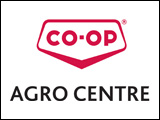The president of the Iowa Pork Producers Association says challenges facing pork producers are similar on both sides of the Canada U.S. border.
Earlier this month a delegation representing the Iowa Pork Producers Association took part in Manitoba Pork Council’s 2011 Annual General meeting in Winnipeg.
The trip was part of ongoing reciprocal visits involving the two organizations that have been taking place now for several years.
Iowa Pork Producers Association president Leon Sheets says the relationship between the two organizations is strong.
Producers, whether it be Manitoba or your neighbors to the east, Ontario, or the west, Saskatchewan, or when we travel abroad producers basically have the same issue.
Our feed costs or input costs are extremely challenging.
The availability of those stocks are worrisome as we approach the summer.
Manitoba, you had snow at the time I was there on the western half of the state in Winnipeg, you started looking around for dry land.
It didn’t look like you’re going to have and early planting season which could raise the question on if you’ll have enough feedstocks.
It certainly is a question right now in Iowa but also the similarities is what producers have to do to maintain their operations, to keep good relationships with their neighbors.
We have the Department of Natural Resources of what we have to do with our nutrient management plans to stay in compliance with nutrients we take from our barns and put on the land and our harvest partners, we’d always like to see them pay more for our product and where the consumers are consuming the product is to keep demand up if we’ve got more product than what we can consume domestically then we’re both working in the foreign market place so we have a lot of common things that we need to work together with.
Sheets notes U.S. mid-west pork processors need pigs to maintain capacity while Manitoba has an excess supply so there is an opportunity for Canadian producers to take advantage of U.S. processing capacity.
Source: Farmscape.Ca



